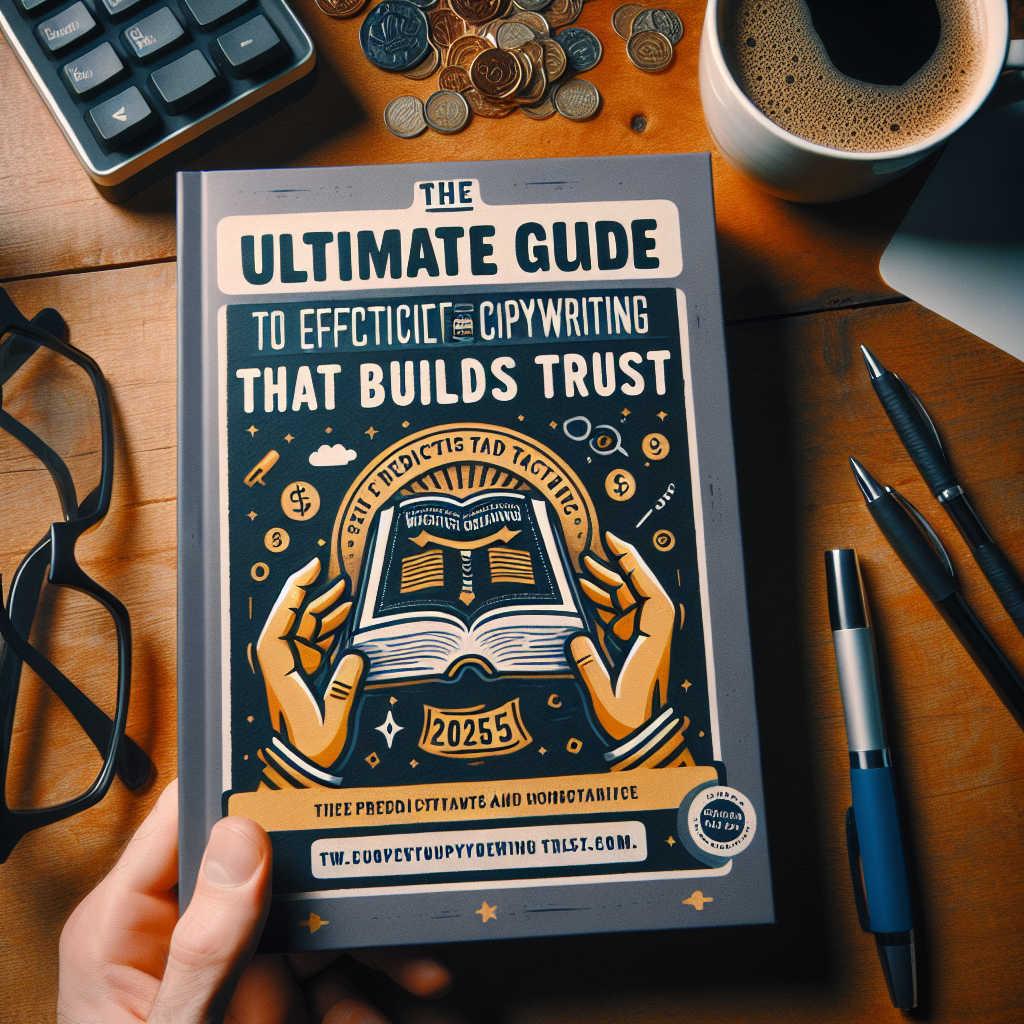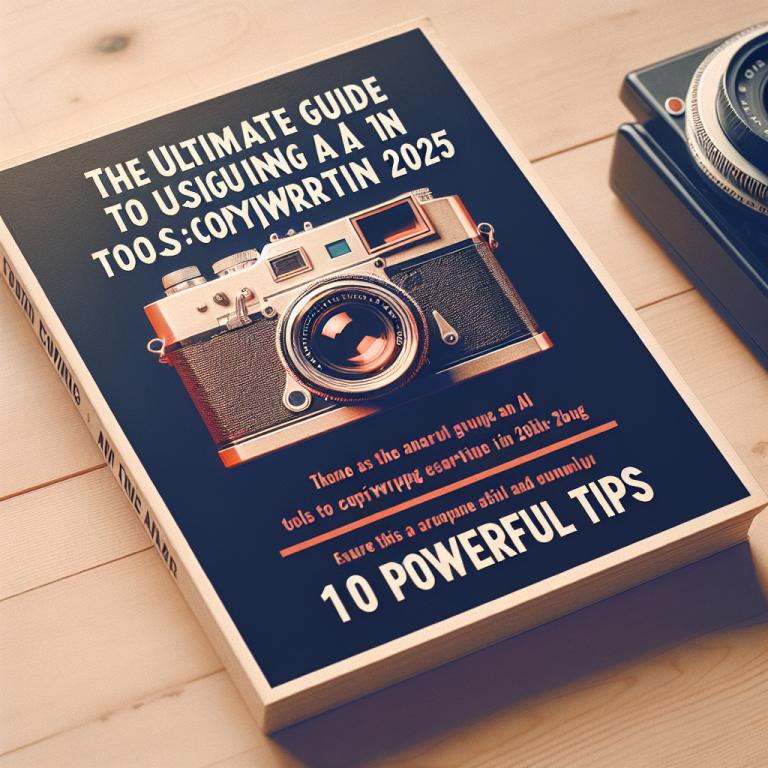The Ultimate Guide to 10 Effective Website Copywriting That Builds Trust in 2025
- 1. Understand Your Audience Deeply
- 2. Use Clear and Honest Messaging
- 3. Highlight Social Proof and Testimonials
- 4. Create Authentic Brand Voice
- 5. Focus on Benefits Over Features
- 6. Incorporate Credible Data and Facts
- 7. Be Transparent About Pricing and Policies
- 8. Write Engaging and Relatable Content
- 9. Optimize for User Experience and Clarity
- 10. Maintain Consistency Across All Touchpoints
1. Understand Your Audience Deeply
Research Your Ideal Customers
Effective website copywriting that builds trust begins with a thorough understanding of your target audience. Use tools like surveys, social media listening, and analytics to gather insights about their needs, preferences, and pain points. In 2025, personalization is more important than ever; tailoring your message to specific segments can dramatically increase trust and engagement.
For example, a fitness apparel brand might create different copy for active athletes versus casual exercisers. Recognizing these distinctions allows you to craft messages that resonate on a personal level, fostering trust from the very first interaction.
Investing time in understanding your audience not only improves your messaging but also demonstrates that you genuinely care about their needs, which is a cornerstone of trustworthy website copywriting that builds trust.
Develop Detailed Customer Personas
Creating detailed personas helps your team visualize your ideal customers and write with empathy. Include demographic info, motivations, fears, and goals. This practice guides your tone, language, and value propositions to align closely with your audience’s expectations.
In 2025, AI tools can assist in generating accurate personas based on live data, making your targeting more precise. When your copy speaks directly to these personas, readers feel understood and are more likely to trust your brand.
Remember, the goal is to make your audience feel heard and valued through your wordsâan essential element in website copywriting that builds trust.
2. Use Clear and Honest Messaging
Communicate Value Transparently
Honesty in your website copy is fundamental to building trust. Be transparent about what your product or service offers, and avoid overpromising. Clear messaging helps set correct expectations, reducing misunderstandings and discouraging distrust.
For instance, instead of vague claims, specify how your product solves a specific problem. Studies in 2025 indicate consumers increasingly prioritize honesty; 78% say they are more likely to buy from brands they perceive as transparent.
Ensure that your calls-to-action are straightforward, guiding visitors naturally without any confusing jargon or hidden agendas.
Avoid Jargon and Ambiguity
Use simple language that your audience can easily understand. Jargon can create barriers and skepticism, especially if customers arenât familiar with industry terms. Clear, concise sentences improve readability and foster trust.
Test your copy with real users or through A/B testing in 2025 to identify areas where clarity can be improved. Remember, the more transparent and straightforward your messages, the more your audience perceives you as trustworthy.
Authenticity combined with clarity forms the backbone of effective website copywriting that builds trust.
3. Highlight Social Proof and Testimonials
Showcase Genuine Customer Feedback
Social proof remains a powerful element in convincing visitors of your credibility. Display authentic testimonials, reviews, and case studies prominently. In 2025, verified reviews with multimedia elements like videos and photos are especially effective.
Consider platforms like Trustpilot or Google Reviews integrated into your website, which provide credibility and foster trust. Data shows that 92% of consumers read online reviews before making a purchase, making social proof indispensable for website copywriting that builds trust.
Make sure these testimonials highlight real outcomes, not just generic praise, to reinforce your brandâs trustworthiness.
Leverage Influencer and Expert Endorsements
Endorsements from well-known figures or industry experts can amplify your credibility. When these endorsements align with your brand values, they serve as powerful testimonials that reinforce trust.
Always verify the authenticity of endorsements and ensure they are visible on your homepage and landing pages. In 2025, brands that utilize credible endorsements see a 30% increase in conversion rates, emphasizing the importance of strategic social proof in your website copywriting.
Authentic social proof bridges the gap between skepticism and trust, making your brand more appealing to new visitors.
4. Create an Authentic Brand Voice
Define Your Unique Voice
Your brandâs voice is a reflection of your values and personality. An authentic, consistent voice helps build trust because visitors know what to expect and feel connected to your brand identity. In 2025, personalization allows brands to craft a genuine voice that resonates deeply with specific audiences.
Use conversational language, storytelling, and relatable tone to foster a sense of familiarity and authenticity. For example, Patagoniaâs friendly, honest tone emphasizes their environmental commitment, reinforcing trust through consistency.
Develop brand guidelines to ensure all copywriters maintain this voice across channels, creating a seamless and trustworthy experience for your audience.
Be Relatable and Human
Incorporate human elements such as humor, empathy, and honesty to make your content approachable. When people see a human face behind a brand, theyâre more inclined to trust it. Sharing behind-the-scenes stories or customer spotlights can help bridge the emotional gap.
In 2025, the average consumer values authenticity more than ever; 84% say they prioritize genuine connections over slick marketing. Building a relatable brand voice directly boosts your website’s trustworthiness.
Remember, genuine and relatable copywriting turns visitors into loyal customers who believe in your brand’s integrity.
5. Focus on Benefits Over Features
Translate Features into Real Benefits
While features describe what a product does, benefits explain why it matters to your customer. Effective website copywriting that builds trust emphasizes how your offering improves lives, solving problems and fulfilling needs.
For example, instead of saying “This laptop has a 16GB RAM,” highlight the benefit: “Run multiple applications smoothly without lag.” This approach shows empathy and understanding of customer needs.
In 2025, consumers are increasingly savvy and appreciate transparent, benefit-oriented messaging that aligns with their goals.
Use Testimonials to Showcase Benefits
Real-world examples from satisfied customers help illustrate the benefits in action. Incorporate stories where your product or service made a tangible difference.
This creates social proof and reinforces trust because potential customers see evidence of your claims. Incorporate visuals and detailed case studies whenever possible for added credibility.
Ultimately, emphasizing benefits in your website copy fosters trust by demonstrating authentic results.
6. Incorporate Credible Data and Facts
Support Claims with Statistics
Data-driven content boosts your credibility significantly. In 2025, 65% of consumers say they trust brands more when they present facts backed by research.
Use reputable sources for your data, and cite them appropriately. For example, referencing industry reports or government statistics can reinforce your authority and dependability.
Including relevant data in your copy boosts confidence in your brand and encourages trust in your propositions.
Share Achievements and Certifications
Highlight any awards, certifications, or industry recognitions to add to your credibility. Customers tend to trust brands with proven expertise and validated credentials.
Display badges strategically on your websiteânear the header, footer, or purchase funnelâto reassure visitors. In 2025, trust increases noticeably when consumers see verifiable proof of your professionalism and authority.
Data and certification validation are essential components of website copywriting that builds trust.
7. Be Transparent About Pricing and Policies
Clear Pricing Information
Ambiguous pricing can lead to skepticism and abandoned carts. Show detailed, upfront pricing to cultivate trust. If discounts or additional fees apply, state them clearly.
This transparency reduces the risk of surprises and increases conversion rates. In 2025, 80% of consumers say transparency in pricing influences their purchase decision.
Donât hide costs; instead, explain value to justify the prices, and always clarify the terms of service.
Accessible Policies and FAQs
Providing easily accessible policies about refunds, cancellations, and data privacy demonstrates your integrity. Write FAQs in simple language to address common concerns.
Transparency in your policies reassures visitors, making them more willing to trust your brand and engage fully. As trust becomes more critical in 2025, having clear policies distinguishes trustworthy brands from competitors.
Effective policy communication is a cornerstone of website copywriting that builds trust.
8. Write Engaging and Relatable Content
Use Storytelling Techniques
Stories connect emotionally and make your brand memorable. Share customer success stories or your brandâs origin story to build rapport and trust.
In 2025, storytelling is a proven way to foster an emotional connection, which directly impacts trust levels. Engage your audience with narratives that align with their values and needs.
Authentic stories make your website content more relatable, encouraging visitors to trust and connect with your brand on a personal level.
Incorporate Personalization
Personalized content shows your audience that you understand their specific interests. Use data-driven methods to tailor messages, offers, or greetings based on visitor behavior.
Personalization enhances the user experience, making your website feel more trustworthy. In 2025, 84% of consumers expect personalized experiences, which boosts trust and loyalty.
Practical tips include dynamic content, targeted email follow-ups, and location-based offers.
9. Optimize for User Experience and Clarity
Simplify Navigation and Layout
A cluttered website drives visitors away and diminishes trust. Create a clean, intuitive layout that makes it easy to find information.
Use clear headings, concise text, and strategic calls-to-action. Well-organized content reassures visitors that your website is professional and trustworthy.
In 2025, a seamless user experience is essential; Googleâs algorithms favor websites that are easy to navigate, further improving your visibility and trustworthiness.
Improve Loading Speed and Mobile Responsiveness
Slow websites frustrate users and reduce trust. Optimize images, use efficient coding, and ensure your site works well on all devices.
Data from 2025 shows that 70% of visitors abandon sites that take longer than 3 seconds to load. Mobile responsiveness is equally crucial, as over 60% of web traffic now comes from smartphones.
Technical optimization directly impacts your credibility and trustworthiness in the digital landscape.
10. Maintain Consistency Across All Touchpoints
Uniform Messaging and Visuals
Consistency fosters trust. Use the same tone, style, colors, and branding elements across your website, emails, social media, and advertising.
This uniformity reassures visitors that they are engaging with a reliable and professional entity. In 2025, consistent branding increases revenue by up to 23% according to industry studies.
Develop brand guidelines to ensure all content aligns, creating a cohesive experience that builds and sustains trust.
Regular Content Updates
Keep your content fresh and up-to-date. Regular blog posts, news, and updates show that your business is active and transparent.
Timely information about product launches or policy changes helps maintain trust and positions your brand as a leader in your industry.
Consistent, current content underscores your commitment to honestyâcrucial in website copywriting that builds trust.
Frequently Asked Questions
Q1: Why is website copywriting that builds trust essential in 2025?
As competition increases, building trust through compelling website copy is vital for customer acquisition and retention. Trust directly influences purchasing decisions, especially as consumers become more cautious and research-driven.
Q2: How can I make my website copy more trustworthy?
Use clear, honest messaging, social proof, a relatable brand voice, and transparent policies. Supporting your claims with data and maintaining consistency further enhances trust.
Q3: What are common pitfalls to avoid in website copywriting that builds trust?
Avoid overpromising, confusing jargon, and inconsistent messaging. Failing to be transparent or neglecting user experience can reduce trust significantly.
Q4: How does storytelling impact trust in website copy?
Storytelling humanizes your brand, creates emotional connections, and demonstrates authenticity. These elements foster trust and encourage loyalty.
Conclusion
In 2025, effective website copywriting that builds trust is more crucial than ever. It isnât just about persuasive language but creating genuine, transparent, and relatable content that resonates with your audience. By understanding your audience deeply, leveraging social proof, maintaining authenticity, and ensuring consistency, you will establish a trustworthy online presence. Remember, trust is the foundation of any lasting customer relationshipâinvest in your website copywriting strategies accordingly to see long-term success in 2025 and beyond.










